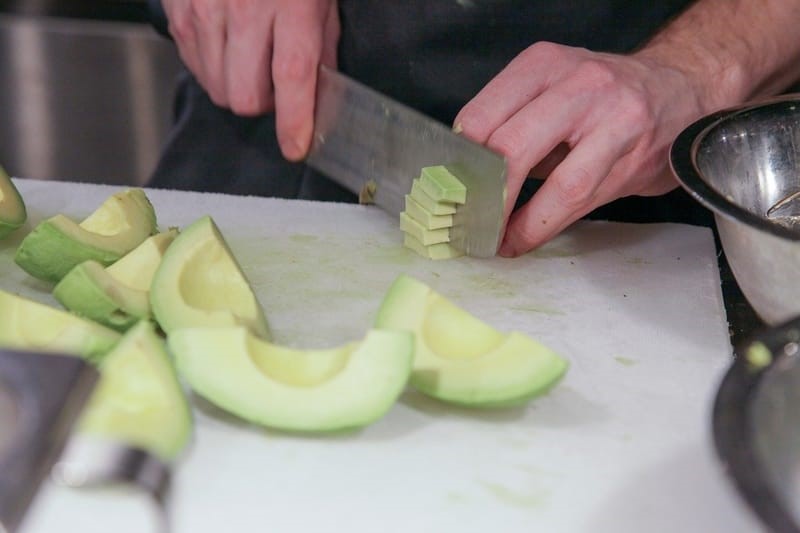No matter what type of food business you run, knives will be a vital tool in your operations. Learning how to use a knife safely is important to reduce injury but can also help promote food safety. Since it’s such an important tool in the industry, we should take a look at five tips for food safety training for handling knives effectively.

Knife Food Safety Training Guide For Using Knives
We’ve identified five steps to keep knives safe and reduce the risk of food contamination from improper use:
- Use Proper Technique
- Use the Right Knife for the Job
- Use Appropriate Cutting Surfaces
- Clean and Sanitize Properly
- Keep Knives Sharp
Every staff member who handles a knife should have food safety training on how to handle it properly. Improper knife use can lead to cuts, slices of human flesh ending up in product and the inability to open doors due to missing digits. Knife techniques are best learned visually, so take a look at the following video demonstrating proper knife techniques.
Many knife injuries occur when the wrong knife is used for a specific job. If you’re using a paring knife for mincing onions, not only will it take forever, but you risk the knife slipping or sticking, whereas a chef’s knife is much too long to devein shrimp causing the risk to sliced fingers.
The cutting surface you use can greatly affect both personal and food safety. Glass, stainless steel and other slick and hard surfaces can cause knives to slide or bounce almost guaranteeing an eventual injury, while soft surfaces such as wood can be damaged by knives creating small grooves that can become breeding grounds for bacteria. The best cutting surfaces are NSF-approved cutting boards that can be easily cleaned and sanitized.
Knives also need to be cleaned and sanitized properly for food safety. Even if you’re only preparing vegetables, knives should be sanitized after each use. Over the course of time, remnants of food can begin to decay-causing a pathogen risk if used again unsanitized. It’s often recommended that knives be cleaned by hand using appropriate sanitizing solutions as chemicals in dishwashing machines can create microscopic pits in knife blades causing them to dull quicker and harbor bacteria.
Finally, there is an increased risk of injury and food safety risks from dull or uncared-for knives. A sharp knife will slice through product without bouncing off surfaces or changing angles during entry. Dull knives can also be more difficult to keep clean, increasing a foodborne illness hazard.
Have you taken the time to evaluate food safety training and knife use in your kitchen?
